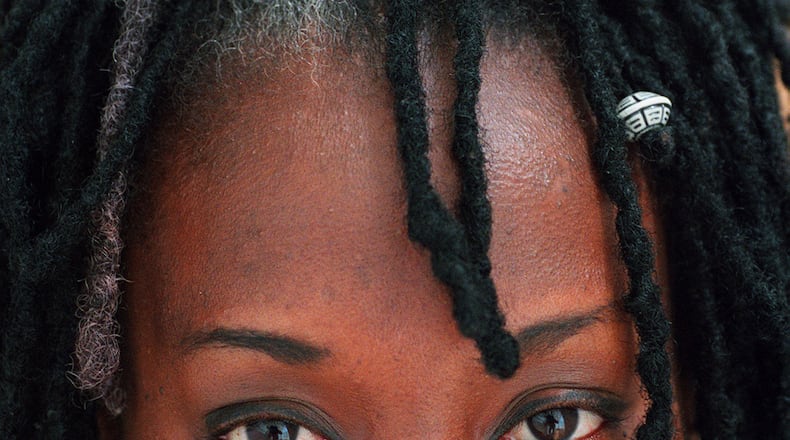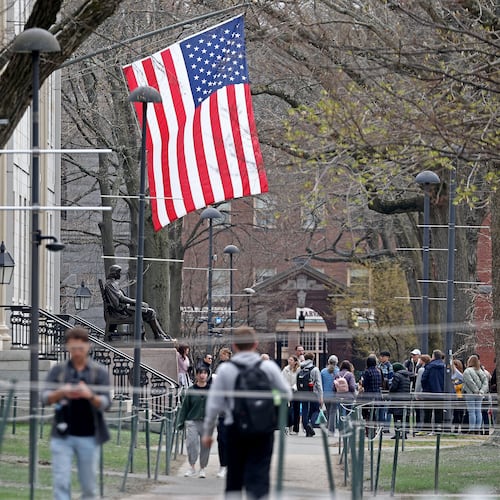Rouhollah Aghasaleh is a postdoctoral researcher in the department of middle and secondary education at Georgia State University and cofounder of Feminist Scholar-Activists. In this piece, Aghasaleh talks about dress codes as enforcement of privilege.
His essay comes at a time when black parents are questioning school rules against braids, twists, cornrows or dreadlocks -- traditional African-American hairstyles. Parents are asking why these hairstyles are deemed distracting by school dress codes when ponytails or pigtails are not. Why are these styles in violation of school dress codes requiring hair to be "clean and neat"?
(Here is a good New York Times op-ed on the unfairness of rules that penalize black students for essentially having "black hair.")
Aghasaleh's piece goes far deeper than school dress codes and, in quoting an anonymous racist comment at the University of Georgia, it uses a racial slur.
By Rouhollah Aghasaleh
In 2013, an anonymous user posted on the University of Georgia Black Affairs Council's Facebook page this message: "Why can’t you dumb dirty niggers stop stinking up the place? Let UGA be RIGHT for good WHITE Christian students."
While portrayed as an isolated incident, this is an honest translation of what white supremacist system implicitly conveys to underprivileged people on a regular basis. Last year, visiting a local high school in a majority black working class community in Georgia, I confronted a poster posted all over the school. The poster, titled "The Dress Code,” included figures of two young adolescents; a black male wearing baggy jeans, bandana, tank top with a beer logo on front and a white female wearing short shorts, halter top with spaghetti straps and a hat. The poster was meant to visually portray the inappropriateness of hip hop clothing, revealing too much skin and working class attire at school.
In the picture, representation of working-class masculinity and femininity was vivid, which was, of course, entangled with race as well. It conveyed a message to working class as well as black students (and faculty and staff) that it aims to exclude their culture from the school environment. It also emphasized what is valued as modesty in the South. Knowing that clothing is a socio-cultural construct and potentially represents ethnicity, class, sexuality, and many other things, posting this picture simply means that white middle-class clothing and culture is privileged over working class and black ones.
I wrote to the principal: In a community in which the majority is African-American and from a lower socio-economic status, this implicitly teaches students their culture is disruptive for their education and academic success. However, all individuals should receive an equal respect and all cultures should be valued equally in a public institution. How could we call for diversity and multiculturalism, and yet tell students to leave their cultural knapsack at the door?
Dress code as it exists in schools means some bodies are more privileged over the other. Dress code is to regulate and maintain the normative gender, sexuality, race, and class. Halter-tops, tube tops, one shoulder tops, muscle shirts, see-through or mesh tops are not to be worn. Blouses, shirts or tops that reveal bare backs, midriffs, undergarments, or have spaghetti straps or revealing necklines are also described as inappropriate. Similarly, acting black and wearing clothes of working class is considered disruptive for education and inappropriate for businesses.
We have been taught from an early age to make quick judgments about people as a way to keep ourselves safe. However, those quick judgments can be very dangerous when we rely on stereotypes. This is what Ferguson Police Officer Darren Wilson did when he shot Michael Brown. Judgments about bodies are not limited to the criminal incidents. It is rather a normalized part of our lives.
In our daily life we make these quick judgments constantly. We have been taught that bodies with threadbare clothes and bodies that look drugged are more likely to be dangerous. Many of us – regardless of our race and gender — have been disciplined to stay away from black males in baggy jeans and hoodies or bandanas, listening to loud rap music. We continually assess the bodies and judge how dangerous those bodies could be, might be in downtown bars, on city buses, on underground trains or elsewhere in public places. In so doing, we produce a young black male as potentially violent and ourselves as vulnerable and potentially victims. When we choose not to sit next to a poor, male, black body in the bus; or when we prefer to hire a white taxi driver rather than an immigrant one; or when we think an underdressed female body is sexually available; we reproduce values and contribute to an unjust discourse which dehumanizes other bodies.
If a 12-year-old white boy waves around a toy gun at a playground, it is unlikely that one is going to assume it is real and shoot him if he does not drop it. When a 17-year-old white male walks home alone one evening, in a family neighborhood, wearing a hoodie, no one is going to say he looks suspicious or assume he is on drugs, pursue him, and gun him down before police arrive. And when an 18-year-old white male is walking with a friend down the middle of a street in broad daylight, no one is going to call for backup and fire deadly shots at him six times, regardless of whether he fights or flees, whether he puts his hands up or not.
Body matters. Some bodies will never have to worry about these things, and some others will have to worry about them all their lives. Some bodies are innocent until proven guilty, whereas some others are assumed to be guilty until they are killed and found innocent after it is too late.
We, people of color, are not criminals; our brown and black skin tone should not make us potential threats. Our men are not smugglers and rapists and our women are not Jezebels and sexually accessible. Like all other boys, our boys are cute, not men with criminal capabilities. And, our girls are not distractions. We want justice. Let us breathe. I echo Eric Garner’s voice before it gets too late, “I can’t breathe.”
I can’t breathe.
About the Author
Keep Reading
The Latest
Featured




